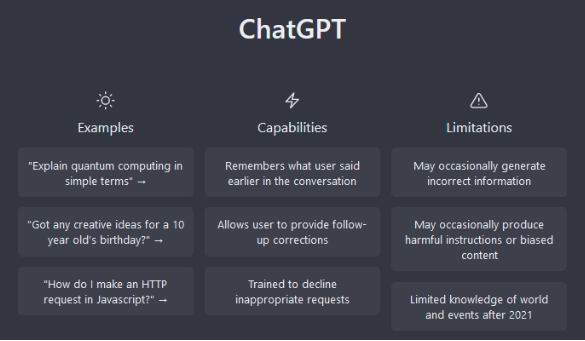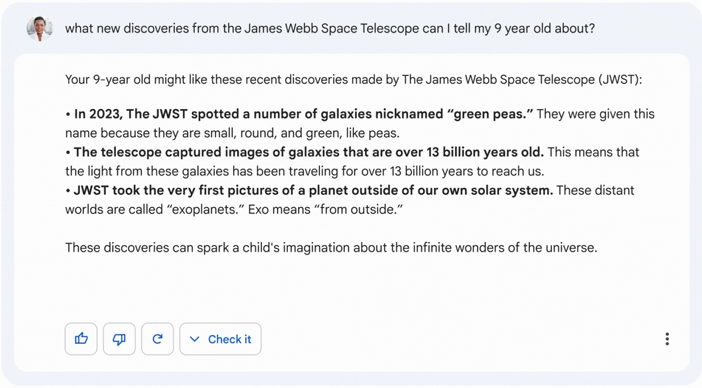
Conversational Artificial Intelligence (AI) is unarguably the most talked about subdomain of AI today. While ChatGPT's introduction by Microsoft in November last year shifted the world's attention to AI more than ever before, the discussion is further being ignited with Google's answer to it, termed Bard.
Tech giant Microsoft has already invested about $10 billion in the San Francisco-based independent AI research laboratory OpenAI to reinvigorate efforts to optimize ChatGPT. The launch of Google's Bard has toughened the ongoing competition in the conversational AI market today, and the world is watching in anticipation to see which one of these AI systems comes out on top.
However, while there are many areas where ChatGPT and Bard coincide, there are also variations in terms of the underlying technologies and their potential applications. In this article, we will look at everything that has been revealed by the technology behemoths about their respective conversational AI solutions so far and try to find clear distinctions between the two.
What is ChatGPT?
ChatGPT is a conversational AI chatbot that utilizes Natural Language Processing and Understanding (NLP/U) models. It allows users to have human-adjacent conversations with a chatbot that generates distilled responses following the synthesis of multiple potential results.
The language model that the chatbot is built upon has been trained with billions of data sources from across the internet. It was built on top of the GPT-3 spectrum of large language models and has gone through a series of calibrations leveraging both supervised and reinforcement learning-based algorithms.

Image: Snippet from the publicly available demo of ChatGPT
ChatGPT was initially developed by OpenAI, an American AI research laboratory that has two primary divisions; the non-profit OpenAI Incorporated and its for-profit subsidiary known as OpenAI Limited Partnership. After investing $1 billion in OpenAI in 2019 and then several funding injections in the following years, Microsoft has now built an insider relationship with the company.
When Microsoft unveiled ChatGPT for the general public in November 2022, it was followed by millions of casual users trying it out within the very first day. Likewise, OpenAI requires Microsoft's financial support and cloud computing resources to process enormous amounts of data and run the ever-more complex models that enable apps like the ground-breaking AI image generator DALL-E to produce realistic images based on a few words and ChatGPT to produce startlingly human-like conversational text.
What is Bard?
Google's Bard is a conversational AI application that looks through billions of bytes of data across the internet representing multiple perspectives. Users are provided with the most accurate and condensed responses to their questions in formats that are simple to understand after it synthesizes this data in real-time.
The main objective of the Google Bard chatbot is text production in answer to even the most arbitrary inquiries using generative AI techniques. By combining conversational AI with information derived from real-time web-crawled data, more sophisticated uses of the chatbot can be anticipated in research efforts in education, business, and our daily lives. With our Bard integration services, you can unlock these possibilities right now. Imagine building chatbots that personalize learning experiences, analyze market trends in real-time, or power virtual assistants that understand your needs. Bard integration makes it all possible.

Image: Example of search results optimized by Bard
Bard is a conversational chatbot AI, much like other chatbot AIs. This means that users engage with it by entering a question or request into a text box, and the AI—in this example, Google Bard—then generates a response in the form of a conversation. It is now only available to "trusted testers," but a public release is imminent. However, there is enough information available for us to obtain responses to some of the most important issues about Bard AI.
The Underlying Technologies of ChatGPT vs Bard
Bard was built on some of the following technologies and language models that process natural language in various ways. While there is not a whole lot of information about Bard open to the public, what is known so far is that some of the underlying technologies of the conversational AI chatbot are the following:
1) Large Language Models: These models may generate high-quality outputs that can range from short text replies to in-depth analyses because they were trained on vast volumes of text datasets.
2) Transformer Models: These transformers may produce accurate representations of the relationship between words and their context in a sentence since they have been trained on a corpus of text datasets.
3) Generative Adversarial Networks: These use two neural networks, a generator, and a discriminator, to create visual and multimedia content from texts and images.
4) Diffusion Models: These models are based on replicating the dissemination of information in a network and forecasting the market adoption of novel products or concepts.
ChatGPT is based on the GPT-3 family of language models developed by OpenAI which Bard has also utilized, but what is nuanced about this chatbot is the series of datasets that it has been trained on. Some of those datasets are:
1) Common Crawl: It is a company that searches the internet and makes its archives and statistics available to the public without charge. The online archive maintained by Common Crawl contains petabytes of information gathered since 2011. Typically, it completes crawls once a month.
2) Wikipedia: Everyone knows and uses Wikipedia to learn about every topic under any domain, which means ChatGPT has a record of everything that has ever been in the Wikipedia archives.
3) BooksCorpus: There are 11,038 free novels in BookCorpus, a sizable collection of unpublished authors' works in 16 distinct subgenres as romance, history, science, adventure, self-help, and so on.
4) WebText2: All outbound Reddit links from posts with more than three upvotes are contained within WebText2, which is the combined textual version of all these web pages.
Based on the information on internet forums right now and whatever has been made public by Microsoft and Google, it cannot be clearly said what all the underlying technologies of Bard and ChatGPT are. Many of the datasets and models that went into the creation of these conversational AI applications may coincide.
Potential Applications of ChatGPT vs Bard
Since Google has such a large market share, Bing has continued to be an underdog search engine. But Microsoft is attempting to take some of that market share with a significant update to the method that incorporates a new large language model by OpenAI, with ChatGPT.
After the upgrade is released, Bing will be able to respond to questions in a conversational style, which should be quicker than needing to search the internet for the answers. Since Bing is currently in limited availability, you'll need to join the waitlist and cross your fingers. However, as things stand, Microsoft has offered a means to bypass the line and get access before other users.
The next-generation language synthesis and conversational capabilities of Google's large language model LaMDA, which served as the foundational technology for Google Bard's development, were created two years ago.
To ensure a quicker rollout for its release to the general public, it adopted a lightweight LaMDA language model version for the same. In constructing chatbots based on what is Bard, the intelligence gaps with human skills in terms of security and groundedness will also be closed with further fine-tuning.
ALSO READ: Top 7 Applications of AI in Healthcare
Latest Developments
On March 21, 2023, Google announced the launch of a beta version of Bard. Google's parent entity Alphabet revealed its plans to initially roll out Bard in the US and UK, while other countries and languages will get a release subsequently. At present, Bard is set to be opened up to a limited number of users who sign up to be included in the waiting list. Meanwhile, users can also sign up to become beta testers in the Bard Beta Program.
Conversational AI May Witness More Focused Innovation
One of the most interesting possibilities is how ChatGPT and Bard might enhance human understanding of information and more effectively transform it into valuable knowledge, making it simpler for people to find what they're looking for and complete tasks. Finding out what you truly need to know about a subject like this can take a lot of work, and individuals frequently want to consider several points of view. When there is no one correct answer to a subject, AI can be useful in synthesizing findings. If you want to know how you can use chatbots towards enriching your business goals and bottom line, you can book a free consultation with our AI Center of Excellence team.



